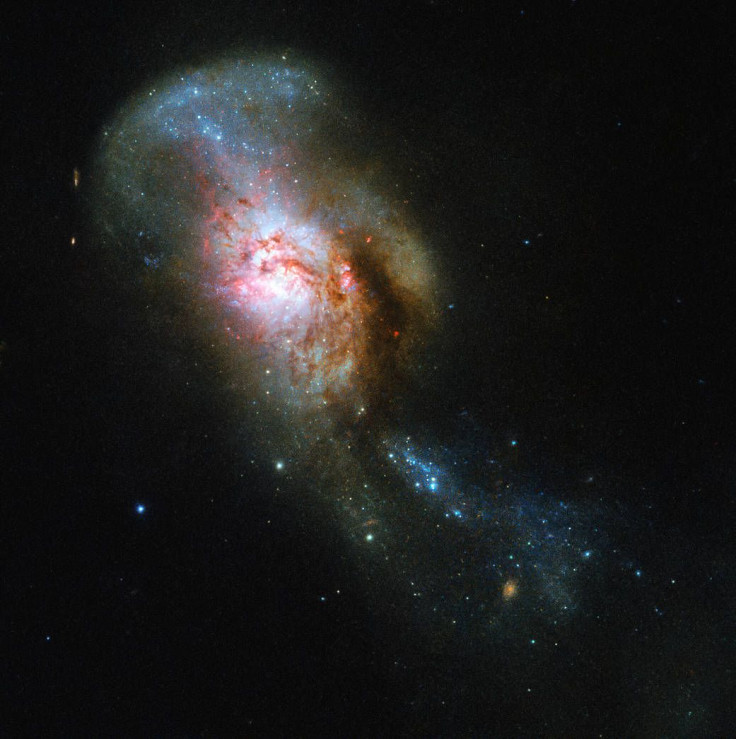NASA’s Hubble Spots Galaxy Collision Known As Medusa Merger

The Hubble Space Telescope operated by NASA and the European Space Agency (ESA) has captured a stunning photo of a unique galaxy known as the Medusa Merger. According to the space agencies, the photo features a large galaxy after it devoured a smaller one.
The Medusa Merger is located in the constellation Ursa Major, which is also known as the Great Bear. It is situated about 130 million light-years from Earth. As noted by the space agencies, the Medusa Merger was formed after a large galaxy collided with and consumed a smaller one that was rich in gas.
The galaxy, which is also classified as NGC 4194, was named after the famous Gorgon from Greek mythology due to its appearance. In the photo, streams of stars and dust can be seen rising from the upper portion of the galaxy.
According To the ESA, these streams, which appear like red tendrils, resemble the snakes on Medusa’s head.
“An early galaxy consumed a smaller gas-rich system, throwing out streams of stars and dust into space,” the ESA explained. “These streams, seen rising from the top of the merged galaxy, resemble the writhing snakes that Medusa, a monster in ancient Greek mythology, famously had on her head in place of hair, lending the object its intriguing name.”
In addition to the star and gas-filled streams, the Medusa Merger also features a distinct region that has been identified by NASA and the ESA as the galaxy’s eye. A study submitted for publication in 2017 offered two possible explanations regarding the formation of the Medusa Merger’s eye.
According to the authors of the study, the region, which is located at the center of the galaxy, may have been formed after the cool gas accumulated and caused a sudden formation of stars. Alternatively, the gas flowing into the center of the galaxy may have been fragmented by the shocks it generated. Both scenarios cause the eye to appear brighter than the rest of the galaxy.
The authors of the study noted that follow-up observations and studies are needed to be conducted in order to determine the exact nature and origin of the Medusa Merger’s eye.
© Copyright IBTimes 2025. All rights reserved.





















